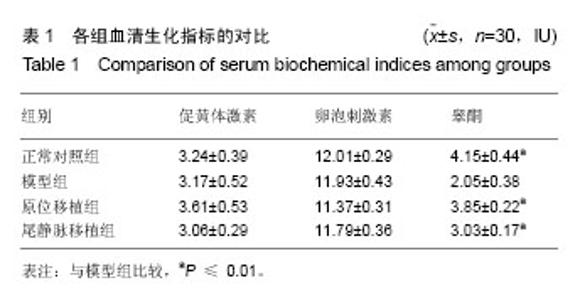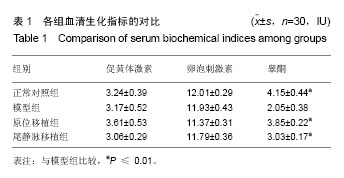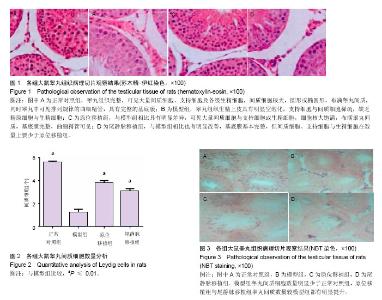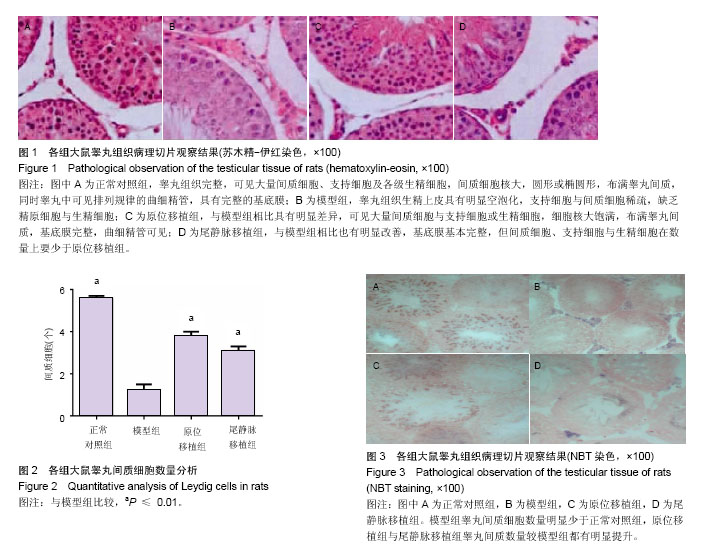| [1] 赵建华,孙权.PADAM综合症诊疗的研究进展[J].当代医药论丛, 2014,12(4):278-280.[2] 冷静,王益鑫,黄旭元,等.上海市1582例中老年男子勃起功能障碍流行病学调查[J].中国男科学杂志,2000,14(1):29-31.[3] 田龙,刘武江,辛钟成.中老年男子雄激素部分缺乏综合征机制研究进展[J].中国男科学杂志,2003,17(4):283-286.[4] 文世林,傅晓英,张菱,等.男性糖尿病患者性功能障碍与性激素受体水平变化的临床研究[J].河南诊断与治疗杂志,1999,13(1): 3-6.[5] 崔慧先,李莎,顾平,等.雄激素对SAMP8小鼠学习记忆能力及海马神经元的影响[J].解剖学报,2008,39(3): 365-369.[6] 李火金,史明,张忠林.中年男性雄激素部分缺乏症的临床治疗[J].深圳中西医结合杂志,2006,16(6):361-363.[7] 胡波,何新平,刘竟芳,等.男性慢性心力衰竭患者雄激素水平与心功能和运动耐量的关系[J].中国老年学杂志, 2008(11):1090- 1091.[8] 杨帆,王龙.雄性激素对小白鼠免疫机能的影响[J].山东大学学报(自然科学版),1987,22(3):124-125.[9] 高天,蔡华杰,王承勇.雄激素补充对中老年部分睾酮缺乏综合征中伴发抑郁症的治疗观察[J].中国男科学杂志, 2006,20(1): 46-48.[10] 王有菊,史虹莉.年龄和代谢综合征对男性性激素的影响[J].中国临床保健杂志,2008,11(4):398-401.[11] 宫立红,李亚英,刘少华.合成类固醇药物对人体雄性激素的影响[J].现代中西医结合杂志,2002,11(17): 1682-1683.[12] 徐鹏,林裕龙,周荣.不同非典型抗精神病药物对精神分裂症患者性激素水平的影响[J]. 热带医学杂志,2014,14(9): 1176-1179.[13] 王雁,谭兰,唐盛孟.男性癫痫患者服用抗痫药物后血清性激素水平改变及其临床意义[J].临床神经病学杂志,1999,12(3):18-20.[14] 张磊,郭伟星.不同中医证型男性老年人高血压病患者性激素水平比较研究[J].中华中医药杂志,2012,27(4):1025-1029.[15] 崔庆华.男性内分泌疾病患者血清性激素的变化[J].放射免疫学杂志,2000,13(3):173-174.[16] 周新丽,赵家军.肥胖与性激素[J].中国实用内科杂志, 2011,31(4): 257-259.[17] 翟玲玲,赵剑,白英龙,等.肥胖对小鼠生殖功能影响及与性激素关系[J].中国公共卫生,2011,27(2):204-205.[18] 李江源.PADAM的诊断和治疗进展[J].基础医学与临床,2006, 26(3):231-237.[19] 舒德芬,陈永华,董碧蓉.睾酮补充治疗新进展[J].华西医学,2004, 16(3):507-508.[20] 彭玉声,许建宁.睾酮补充治疗对部分雄激素缺乏综合征伴前列腺增生患者的影响[J].实用医学杂志,2006,22(16): 1932-1933.[21] 戴继灿,黄翼然,江鱼.安特尔、保列治治疗PADAM合并BPH42例体会[J].中国男科学杂志,2003,17(2):116-118.[22] 王凡,梁军,张忠民,等.中西医结合治疗中老年男子部分雄性激素缺乏综合征的临床观察[J].湖北中医杂志,2013, 35(5):37-38.[23] 过晓强.斑龙丸加减治疗中老年部分雄性激素缺乏综合征与雄性激素水平关系的临床研究[J].海峡药学,2015, 27(10):115-117.[24] 王玺坤.六味地黄汤加减治疗中老年男性部分雄激素缺乏综合征的临床对照研究[J].新中医,2008,40(6):43-44.[25] 孙祥宙,邓春华,郭海彬,等.PADAM动物模型进行同种异体睾丸间质细胞移植的研究[J].中国男科学杂志,2005, 19(3):9-11.[26] 胡资兵,曾荣,郭伟韬,等.骨髓间充质干细胞诱导分化特征[J].中国组织工程研究与临床康复,2008,12(43):8561- 8566.[27] 陈兵,陆德宾,梁自文,等.自体骨髓间充质干细胞体外扩增后移植治疗糖尿病足[J].中国组织工程研究与临床康复, 2009,13(32): 6227-6230.[28] 邱伟,孟增东.骨髓间充质干细胞移植治疗股骨头缺血性坏死的研究现状[J].中国组织工程研究与临床康复,2010,14(2)313-316.[29] 孟宪国,朱士文,高华,等.自体骨髓间充质干细胞移植治疗脑梗死:6个月随访[J].中国组织工程研究与临床康复, 2009,13(32): 6374-6378.[30] 邓志锋,汪泱,邓丽影,等.自体骨髓间充质干细胞移植治疗中枢神经系统损伤性疾病(附五例报告)[J].实用临床医学,2007,8(6):62-65.[31] 马嵘,郑宝钟.不同年龄男性血浆睾酮水平的研究[J].中华老年医学杂志,2004,23(8):28-29. |



